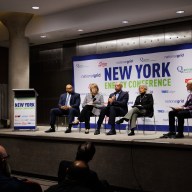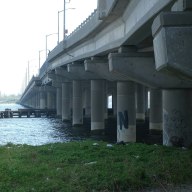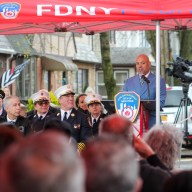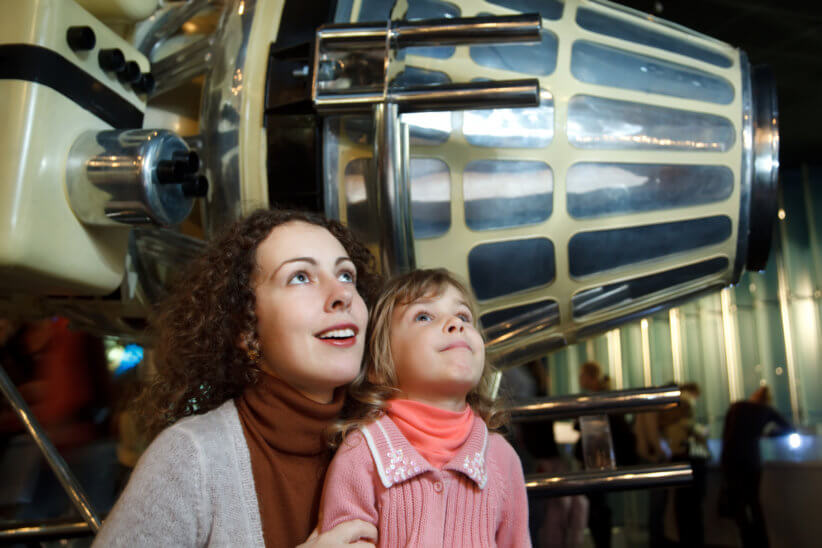By Betsy Scheinbart
Four markers recognizing the historical and architectural significance of the Wycoff-Snediker Family Cemetery and St. Matthew’s Episcopal Church in Woodhaven received official blessings from the church’s rector Sunday.
The two pairs of National Register of Historic Places plaques and Queens Marks have adorned the church’s door frame since May but were officially consecrated by Rector Williams after worship services Sunday morning.
The cemetery, which dates back to 1793, and the church, which opened its doors in 1927, were declared national landmarks by the U.S. Department of the Interior earlier this year, while the Queens Historical Society also recognized them for their value to the borough, said Stanley Cogan, borough historian and president of the historical society.
“Even though many structures in Queens will never become national landmarks, we felt they still deserved to be recognized,” Cogan said, explaining why the Queens Marks program was established.
The program began in 1996 in Richmond Hill and has also visited College Point, Hunter’s Point, Jackson Heights, Corona/East Elmhurst and Astoria before Woodhaven. As for the next borough community that will receive Queens Marks, Cogan’s lips are sealed.
Cogan said the cemetery and church would not have been restored if it were not for the work of Arthur O’Meally, the vice president of operations for the historical society, and Allan Smith, the parish archivist and the vestryman at St. Matthew’s.
They had the help of volunteers from the church community, the Woodhaven Historical Society, where Smith is vice president, and from the Queens Historical Society.
The two men spent four years coordinating the restoration of the cemetery, where Dutch settlers and major Queens land owners buried their families from 1793 to 1892.
The cemetery was not affiliated with the church but is located behind the house of worship on about half an acre of land.
“It was a private family cemetery when the Wycoff and Snediker families had farms here and somehow the church got a hold of it,” Smith said.
At least 136 people were buried in the cemetery, including the Eldert family, which erected a huge polished granite monument — one of 10 stones still standing when the historians began their work more than four years ago.
When Cogan, Smith and O’Meally first saw the cemetery, it was overgrown with foliage and strewn with trash, they said. Many of the headstones had been moved from their original locations and were used as a footpath for a patio near the cemetery’s entrance.
“When I walking in for the first time, I said: ‘My gosh!’ but by the end of the day it was so apparent that this was a real gem,” O’Meally said.
The historians used a survey done in 1932 by Charles Underhill Powell to identify the stones and return them to their correct historic locations.
This involved the backbreaking work of clearing the landscape, digging a trench for the stone and pulling it into the proper trench.
They also found an assortment of gravestone fragments, some of which they were able to piece together and others of which were lying amid a cluster of narrow tree trunks in the cemetery awaiting closer examination.
Almost as exciting as receiving National Landmark status and a Queens Mark for the cemetery, O’Meally said, was stumbling upon a gravestone completely buried underground.
O’Meally was using a probe to explore the cemetery’s grounds when he hit something he thought at first was a rock. It turned out to be an incredibly well-preserved gravestone memorializing Stephen Lott, who died in 1808.
Reach reporter Betsy Scheinbart by e-mail at Timesledger@aol.com or call 229-0300, Ext. 138.





























